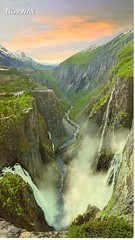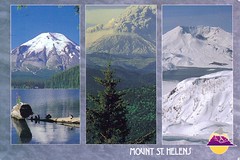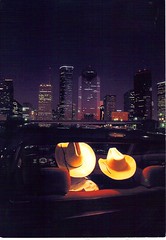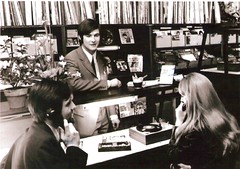
NO-12656
Originally uploaded by MagicTyger
A postcrossing card from LA & Joey in Norway.
This is the Voringsfossen Waterfall, in the southwest of the country.
What a beautiful picture.
Thanks, LA & Joey!


NO-12656
Originally uploaded by MagicTyger
A postcrossing card from LA & Joey in Norway.
This is the Voringsfossen Waterfall, in the southwest of the country.
What a beautiful picture.
Thanks, LA & Joey!

A postcard from an old friend
Originally uploaded by MagicTyger
A postcard from my dear late friend, John Brendan O’Shea that he sent to me in 1991.
He passed away in July 1997.
Often I wish he were still here, even after all this time.
















Click on any of the thumbnails to see a larger picture.
After spending ten days at Yungaba, we were finally transferred to the migrant hostel at Wacol.
This was a place where many migrant families lived after arriving in Australia, until they were able to find a job and get a place of their own.
Our first few weeks in the hostel were in a hut made out of corrugated iron, called a “Nissen Hut”. It looked like a tall skinny galvanized iron rainwater tank, sliced down the middle, and turned on its side. They were cast-offs from the Second World War, and made for cheap housing for new arrivals.
After that we were moved into nicer accommodation in wooden huts.
My memories of the hostel are a bit more coherent than my earlier ones:
As a three year old, my first memory of a childcare centre occurs at this time. It was in one of the Nissen huts. Lots of kids were standing around painting on butchers paper attached to easels. I can remember painting just what I felt like – just enjoying splashing the paint on paper. Some of the older kids were painting recognizable things – square shaped houses with triangular roofs, cars with wheels that had spokes in them. I think it was around this time that I started losing that innocent artistic quality that artists speak about where kids forget how to paint what they feel, and start trying to paint like everyone else.
Later I remember going to childcare in a wooden hut. We called it “Nursery School”. Sometimes we’d play on the swings outside the hut, and sometimes inside, sitting at little tables, or playing on makeshift slides setup indoors, presumably when the whether didn’t suit going outside.
The playground was surrounded by (what seemed to me) to be a huge mesh-wire fence. The gate had a curved metal latch on top – so you couldn’t open it unless you were really tall.
I remember queueing up in a “canteen” for meals with all the other migrants. The strong odour of cooking smells, stews, vegetables, custard, and tasting milky tea out of brown/gold china mugs. In the warmer months they had big industrial sized fans on stands that would blow the air around to keep us cool.
I also remember lots of British mums with their kids on the hostel. Many of them were very unhappy. Some of them were really friendly. One lady who I remember as “Mrs Jackson” had a Christmas tree in her hut. The tree seemed huge to me. It was laden with presents and candy canes in its branches. This must have been in December 1965. Her hut seemed magic to me.
I remember mosquito nets in our hut – obviously there to protect English skin that wasn’t used to mosquitoes! My net had a small hole in it that I could poke my finger through.
I remember a small tin bathtub that mum used to wash me in, so that I didn’t have to go up to the shower block at night time.
And I remember dad’s “Rock Garden” at the base of the stairs leading into our wooden hut. I often sat on these stairs, and remember having some of these photos taken on the stairs – especially the one where I’m sitting next to Karen.
Wacol was miles from anywhere. If you walked out the front gate, there was a highway. There were no houses, just an army barracks on the other side of the highway. The only way out, was to buy a car, catch a bus that occasionally came to the hostel, or walk down to Wacol Railway Station, and catch a train into the city.
I remember catching the train into the city with mum after walking down to Wacol station. The manual wooden boom-gates had to be dragged by hand across the road when the train was due, then dragged back across the railway lines to let the cars through.
The city was a magic place, with tall buildings, wind blowing paper up into the sky, crowds of people, and trams. The trams had wooden slat seats, open windows, and leather straps hanging from the ceiling. And sparks used to fly from roof attachment that drew their power from the overhead cables. All these pictures are still there in the recesses of my early memory.
Here’s some of mum’s recollection of the time:
Because I was pregnant we were the first family to be moved to Wacol hostel. We didn’t really know what to expect. It was situated near bush land. Across the highway from it was the army barracks. We were taken there by taxi. It looked very much like an army camp. There were a lot of wood huts also Nissan huts. They were made of corrugated iron, had doors at each end and usually housed 2 families. This was our first home.
The problem was if you were in one room you would have to go out side to access the other room. This meant one of us had to stay in the room with the Neil & Karen at night, in case they woke up. It was also very cold at night. I honestly had no idea that it got cold in Australia! I was very naïve.
Life on the hostel took a bit of getting used to. Meals were served in a large canteen not an ideal place for a young family. A lot of children were unsupervised. We had to queue up, cafeteria style for our meals. The food was okay, but if you didn’t like it well there was nothing else. The washing was done in a communal laundry, which consisted of 4 laundry tubs, scrubbing boards and a few gas boilers to boil your clothes in. No washing machines or clothes dryers in those days. There were clothes lines near the huts but you had to share them. So a lot of time was spent waiting to do your washing and then finding some where to hang it up to dry. You also had to keep an eye on it in case the washing disappeared!
There were also shower blocks male & female. That was another shock to the system. Not a great place to take small children to get washed. We were supplied with a small tin bath, so mostly we washed the children in the bath in the hut. How ever there was no water connected to the huts, so we would have to carry water back from the laundry. There were a few taps near some of the hunts. This was cold water, so we would have to heat it in the electric jug. When I look back now, it was really quite primitive. It was also very confining transport wise. After a few weeks we bought our first car a Consul.

Mount St Helens
Originally uploaded by MagicTyger
A postcard received via Postcrossing from Mary in Washington State, USA.
Mt St Helens is a volcano that errupted in 1980.
Mary says she used to swim in the lake on the left as a child when she camped there with her family.
Thanks for the lovely postcard, Mary!

NO-12559
Originally uploaded by MagicTyger
That zigzag path on the left is actually a road.
“Eagle Bends” must be Norway’s most dramatic road.
The lower part runs in a spiral tunnel, then climbs in 27 hairpin bends to about 1,000 metres.
Here at the edge of the road is “Eagle’s Nest”, with a fantastic view of the valley.
Received via Postcrossing from Joey and the Cats, in Norway.
Thanks, Joey & the Cats!

LT-9465
Originally uploaded by MagicTyger
St. Ann’s Church, built in 1495-1500, Vilnius, Lithuania.
A Postcrossing postcard from Darius in Lithuania.
Darius says that when Napoleon saw this beautiful church, he wanted to carry it out by hand to France. It looks amazing.
Thanks, Darius!

US-222920
Originally uploaded by MagicTyger
A Postcrossing postcard received from Alyssa in Houston, USA.
Thanks Alyssa!

NL-90727
Originally uploaded by MagicTyger
An unusual postcard of “Concerto” the “Most diverse recordstore in Holland” received via Postcrossing from Maya.
Thanks Maya!!!